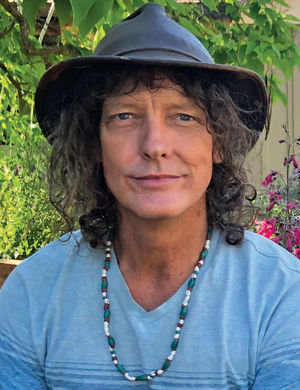The truth about cavalry horses – from a remount wrangler
Mountain Tales: First-hand stories of life in Tehachapi
May 23, 2020
In 1925, when I was 16 years old, my cousin and I got jobs with the remount unit at Fort Bliss, in El Paso, Texas, on the border with Mexico. The remount unit was responsible for gettin' horses broke and ready for the troopers to ride. We weren't in the cavalry, we were employees who lived in civilian barracks on base. There were 3,000 to 4,000 horses at Ft. Bliss at that time, and we got paid "$19 a month and found (room and board)" as remount wranglers. It wasn't easy, but it involved less work than cowboying – we could do what we wanted as long as we broke our quota of horses. There were about 15 men in the remount unit, and I never got hurt too badly, but three remount riders got killed while I was there – one got thrown into a fence and broke his neck.
When the army needed horses, they would notify local ranchers that they were in the market for good mounts. The army paid top dollar – $125 a horse – so ranchers would round up all the horses they thought might qualify. The army had strict requirements: the horses had to be between 15'2 hands and 16'2 hands and be four to eight years old with no white markings. Only about one horse in ten was chosen. If a horse had a little white mark, some of the ranchers would dye it with shoe polish to fool the army buyer. A lot of times the horses would be broncos or mustangs. I remember a rancher telling a sergeant "Those two horses you're buying are outlaws," and the sergeant said, "That's alright, so are our riders."
In movies you'll see troopers on every color of horse, but that's bull. Divisions and troops matched their horses – chestnuts, bays, blacks, sorrels. . . The only one who was allowed to have an off-color horse was the commanding officer. But they were all solid colors. You couldn't give the army a spotted horse. There were also very few grays. I believe I only saw one troop of gray horses. When the wranglers figured that a horse was ready for the troopers, they would saddle and outfit the animal and one of us remount boys would ride him for three or four miles with the troopers on a march. Then they'd switch mounts with one of the troopers and ride the trooper's horse back to the fort. If the new horse was a bronc, you'd switch horses with someone you didn't like. Then when he'd climb on you'd just grin at him. The SOB would be regretting everything he'd ever done to you.
– John "Curly" Mills
Curly Mills and his wife Gracie were longtime Tehachapi residents until they passed away within months of each other. Curly raised horses for more than 50 years.







